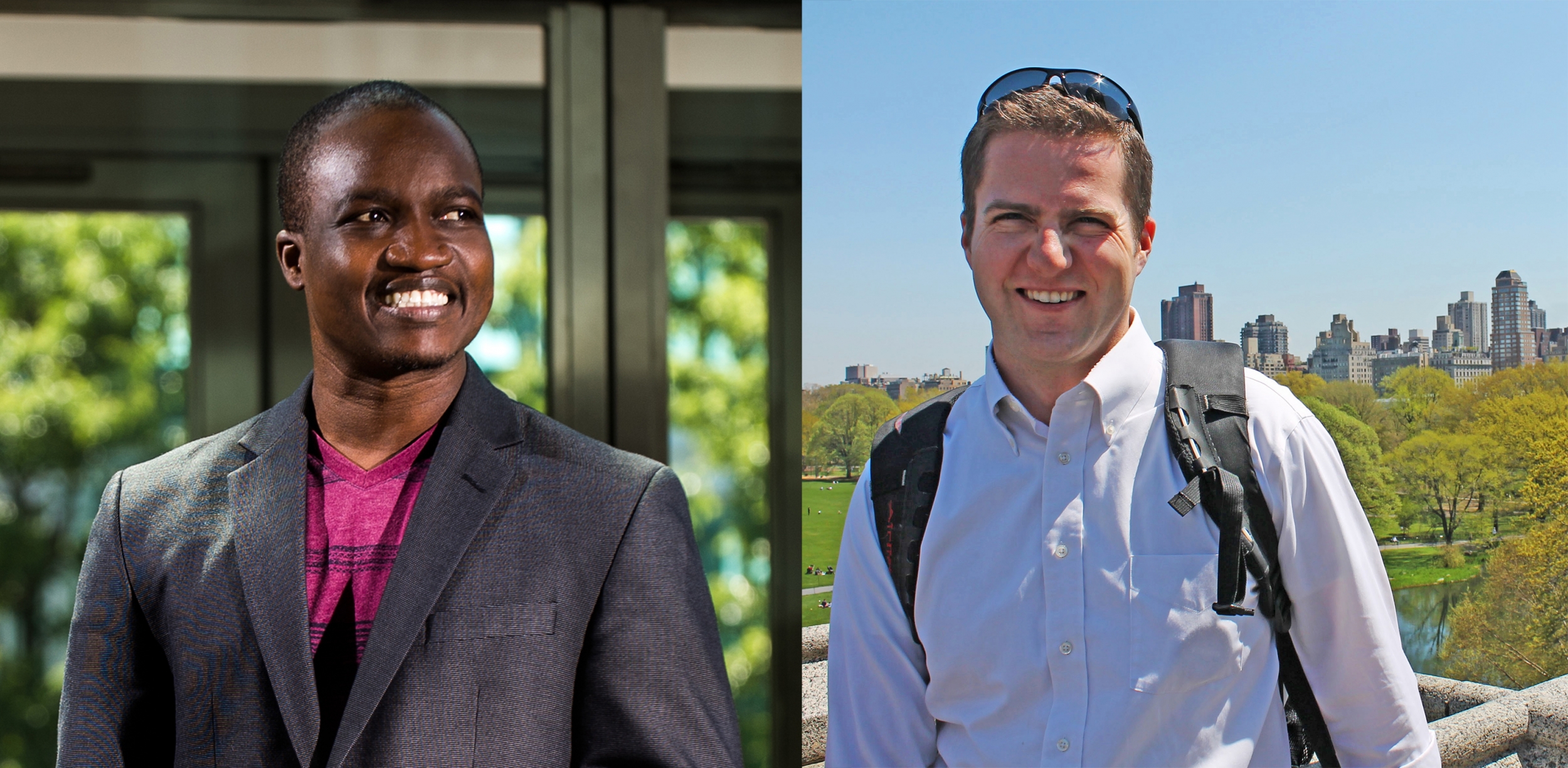Young AFCEA 40 Under 40 Award honors two thought leaders at the Laboratory

Each year, the Armed Forces Communications and Electronics Association (AFCEA) International presents the Young AFCEA 40 Under 40 Award to individuals who provide innovation and thought leadership in a science, technology, engineering, or mathematics field. This year, AFCEA included two Lincoln Laboratory staff members among its awardees: Raoul Ouedraogo and Michael Owen.
Raoul Ouedraogo
Each summer, when a team of interns earns funding to pursue an original concept they’ve developed in just weeks, Raoul Ouedraogo and his diverse and cross-functional team are to thank. Ouedraogo was a driving force behind creating the Intern Innovative Idea Challenge (I3C), a tournament-style idea competition started five years ago that is now a staple of the Laboratory's summer internship program. The spirit of teamwork in innovation that the program instills in its young participants is the same spirit that Ouedraogo is known to bring to his own work.
"Raoul’s influence across the Lab includes mentoring of young staff, but more generally he has had an impact in creating environments for innovation and a sense of accomplishment among his project’s participants," says Curtis Davis, a principal staff member in the ISR and Tactical Systems Division. "He leads his research teams with enthusiasm and optimism, and cultivates an environment of self-empowerment and mutual respect."
Ouedraogo joined the Laboratory almost nine years ago as a staff member in the Advanced Sensors and Techniques Group, where he was promoted to senior staff in 2018. His primary focus early in his career was on radio-frequency technology, specifically miniature antennas, topology optimization, and radar. "But as with many people at the Lab, you end up expanding your areas of expertise and interest given the wide spectrum of work here," Ouedraogo says.
Today, Ouedraogo is most excited about a new initiative he's working on for the U.S. Special Operations Command (SOCOM). Similar to I3C, the SOCOM initiative has at its core a cross-divisional team with a broad portfolio of activities including science and technology advisory to SOCOM, numerous quick-turn and long-term projects, innovation exercises, and hackathons involving military cadets and Special Operations Forces operators. The idea is to bring scientists, operators, and program managers together to address SOCOM’s technology needs.
"Because of our high-frequency interactions and the fact that the operators are involved throughout the process, the chances of these operators using the prototypes we are developing increase exponentially," he says. "We started the quick-turn activities in December, and we've already deployed two capabilities overseas, with several more to follow in the coming months. There is a lot of excitement from the Laboratory and SOCOM about this initiative, and I am grateful to be part of it."
At learning of his reception of the award, Ouedraogo says that he was "surprised at first, then overwhelmed with joy, then grateful to all of my teammates and the folks who nominated me."
Michael Owen
Michael Owen's work at the Laboratory could be called visionary — he's enabling unmanned aircraft systems (UAS) to "see" other aircraft to avoid colliding into them. Demonstrating that UAS can reliably avoid other aircraft is a requirement for the Federal Aviation Administration (FAA) to allow these systems to fly in civilian airspace. Throughout his decade at the Laboratory, Owen has been behind three award-winning programs that each build upon this sense-and-avoid capability.
"Michael is a recognized world leader in the area of unmanned aircraft systems and collision avoidance," says Wesley Olson, who leads the Surveillance Systems Group in which Owen is a technical staff member. “Michael's technical abilities, dedication, and leadership have directly contributed to three R&D 100 Award–winning programs, and he has had a worldwide impact directly benefitting the flying public. I am extremely gratified that he is getting the recognition he so richly deserves."
One of the programs, the Ground-Based Sense-and-Avoid System for UAS, is now in use at 13 UAS-operation sites. This ground radar system enables unmanned aircraft to detect and steer clear of others without requiring the UAS to carry additional sensing equipment. Owen worked with a team to develop sophisticated logic algorithms that assess the current location and velocity of each aircraft to determine what actions the pilot remotely controlling the UAS must take. Another notable technology, the Airborne Collision Avoidance System Xu, uses multisensory data to track nearby aircraft and enables air traffic control operators to direct safe separation between unmanned vehicles and other air traffic. The FAA plans to deploy this system as part of its Next-Generation Air Transportation System Program.
Olson adds that in addition to Owen being a technical innovator, he is a "strong mentor and role model to our young staff and is actively involved in the community."
When reflecting on his career so far, Owen hesitates to pinpoint a specific accomplishment he's felt most proud of. "It's really been the culmination of moments," Owen says. "Working with elements from these systems on our small-UAS test bed to show that UAS could be fed ground radar and entirely avoid other aircraft has been a very cool experience."
Ouedraogo and Owens will be honored by AFCEA International during an awards ceremony later this year. The nonprofit association has 31,504 individual members, 140 chapters and 1,624 corporate members. Its mission is to provide a forum for military, government and industry communities to collaborate for the advancement of information technology, communications, and electronics capabilities.